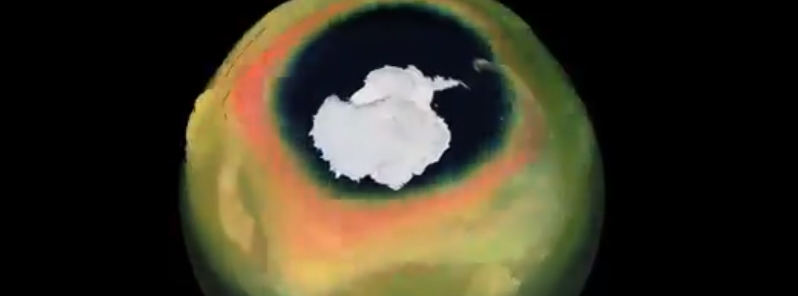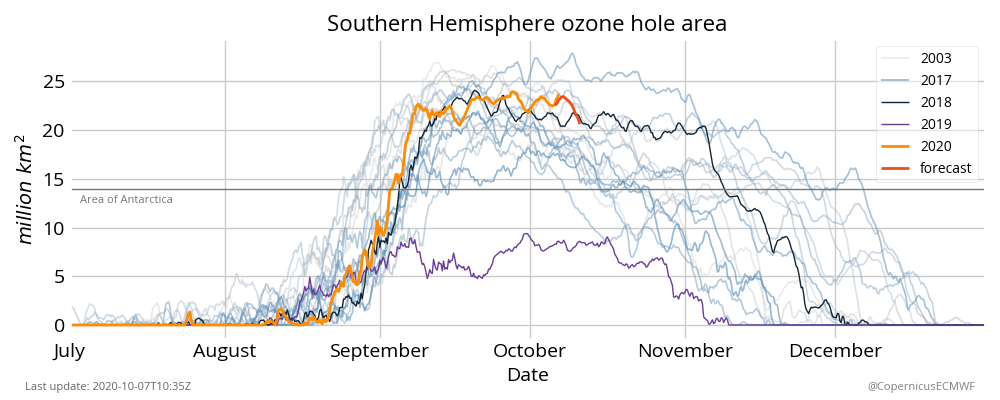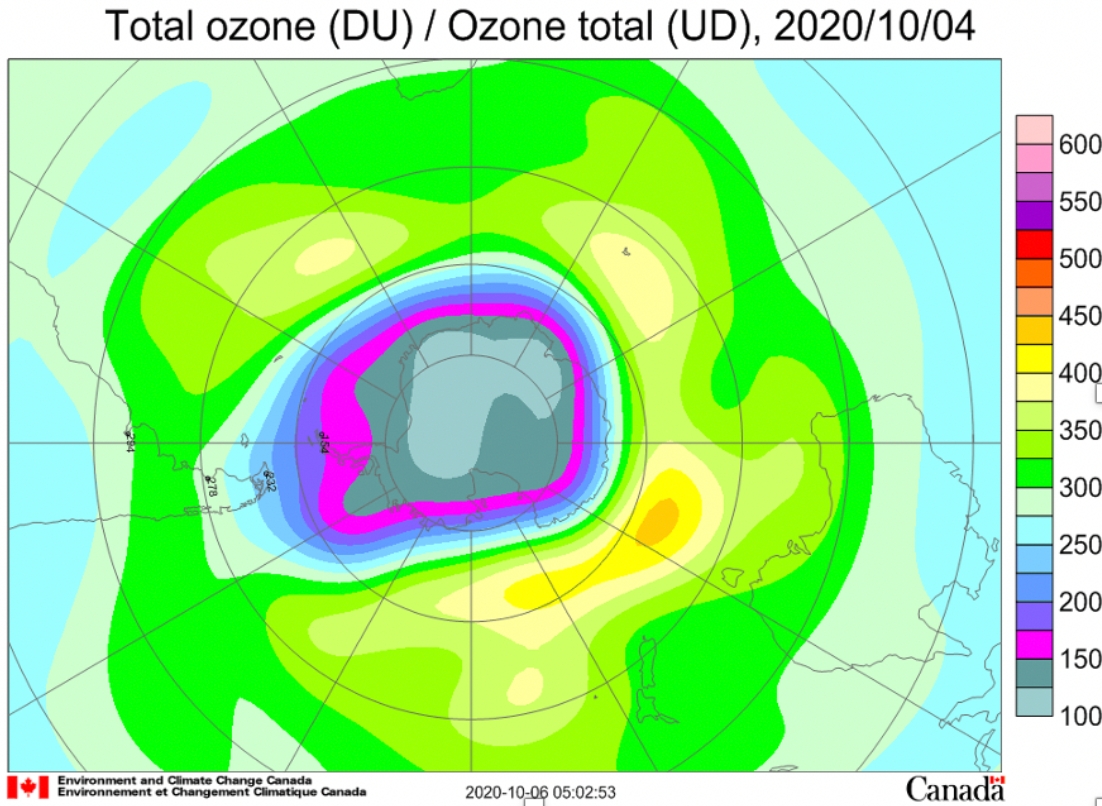2020 Antarctic ozone hole one of the largest and deepest in recent years

The 2020 ozone hole over the Antarctic is one of the largest and deepest in recent years, according to scientists with the Copernicus Climate Change Service (C3S). The hole had grown to 23 million square km (8.8 million square miles)– over twice the size of the U.S. This is above average for the last decade and is spreading over much of the Antarctic continent.
"There is much variability in how far ozone hole events develop each year," said Vincent-Henri Peuch, Director of Copernicus Atmosphere Monitoring Service at ECMWF.
"The 2020 ozone hole resembles the one from 2018, which also was a quite large hole, and is definitely in the upper part of the pack of the last fifteen years or so."
"With the sunlight returning to the South Pole in the last weeks, we saw continued ozone depletion over the area. After the unusually small and short-lived ozone hole in 2019, which was driven by special meteorological conditions, we are registering a rather large one again this year, which confirms that we need to continue enforcing the Montreal Protocol banning emissions of ozone-depleting chemicals."
NASA’s Ozone Watch reports the lowest value of 95 Dobson Units recorded on October 1, and scientists are seeing indications that this year's ozone hole has appeared to have reached its maximum extent.
The large and deep ozone hole has been driven by a strong and stable cold polar vortex, which kept the temperature over Antarctica consistently cold.
The hole grew fast from mid-August and peaked at around 24 million square km (9.2 million square miles) in early October. It now covers 23 million square km (8.8 million square miles)– above average for the past decade and is spreading over much of the Antarctic.
2020's #OzoneHole is both larger and deeper than most in recent years. This is being driven by a strong, stable and cold polar vortex, with all signs pointing to continued ozone depletion in the coming days.#Ozone monitoringhttps://t.co/c2tPB8OBuQ pic.twitter.com/MPiae3I5tL
— Copernicus ECMWF (@CopernicusECMWF) October 1, 2020



Ozone depletion is directly linked to the temperature in the stratosphere, the layer of the atmosphere between 10 to 50 km (6 to 31 miles) altitude. Polar stratospheric clouds only form at temperatures below 78 °C (172.4 °F).
Stratospheric ozone concentrations have been found to have reduced to near-zero values over Antarctica around 20 to 25 km (12 to 15 miles), with ozone layer depth just below 100 Dobson Units.
The ozone hole over the Antarctic increases in size during the Southern Hemisphere spring season, which is from August to October. It reaches its maximum between mid-September and mid-October.
When temperatures in the stratosphere begin to rise in the late Southern Hemisphere spring, ozone depletion slows down as the polar vortex weakens. By the end of December, ozone levels return to normal.
The World Meteorological Organization's (WMO) Global Atmosphere Watch works closely with Copernicus Atmospheric Monitoring Service, NASA, Environment and Climate Change Canada, and other relevant partners to monitor the Earth's ozone layer.
Featured image credit: Copernicus ECMWF

Not only is the ozone hole or depletion over the Antarctic finding ideal conditions to develop but the depletion or hole over the Artic is also developing well due to slightly cooler temperatures in the stratosphere due to a less active sun. I remember a group of atmospheric scientists in a conference audience booing when the reality of an ozone depletion was stated by a researcher on stage. Unfortunately the chlorine gas emitted by Antarctic volcanoes also is a major natural part in the formation of the southern spring ozone depletion.
So what is the big deal anyway ? Why the worry over a naturally occurring atmospheric phenomena ? Maybe mother nature is doing something good for our planet that scientists have not figured out yet ?
Most of the ozone-depleting chemicals can be directly traced to China. Have mercy on any western nation that illegally makes ozone-depleting chemicals. But China will get away with it. China gets away with everything.
But there is still a stratosferic warming at 10hPa https://earth.nullschool.net/#current/wind/isobaric/10hPa/anim=off/overlay=temp/orthographic=-265.75,-95.24,436/loc=135.703,-64.035